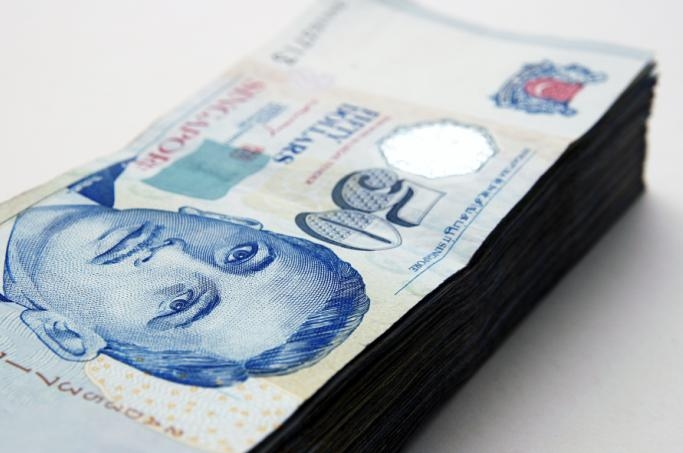
Singapore dollar sits at $1.2185
The local currency edged higher against the US dollar.
IG Markets Singapore said:
The Singapore dollar managed to break out of its $1.22 shackles last night as edged higher against the greenback.
The local currency sits at $1.2185 this morning which comes as a surprise given it was a night for risk-off trading.
US politicians took another step back as Democrats rejected the Republicans latest plans to increase tax revenues and cut spending to avoid a $600 billion black hole.
Even if politicians can bang their heads together it is likely to be at the end of the year and will leave FX markets on a knife edge.
The Vix index, the so-called fear gauge, has risen almost 10% over two days, highlighting the volatility surrounding risk assets.
DBS Group Research meanwhile noted:
The Reserve Bank of Australia (RBA) is expected to cut its official cash target rate by 25 bps to 3.00% at its monetary policy meeting today. Treasurer Wayne Swan warned on Monday that the economy was likely to have cooled in the last quarter. Tomorrow’s real GDP report is expected to show growth moderating to 3.1% YoY in 3Q12 from 3.7% in the previous quarter.
Even so, the market is not really confident that there will be more rate cuts in the future. For example, the implied yield on 90-day bank bill futures maturing in December 2013 is now about 2.85%, up from its low of 2.63% in early October.
Hence, the RBA statement will be more important than today’s fully discounted rate cut. Judging from the market’s positive response to China’s PMI data yesterday, the RBA’s assessment of future demand from China and Asia ex Japan will be important, not just for the Australian dollar, but for other currencies representing risk appetite as well.
Apart from external factors, the Australian economy is also facing domestic challenges. The unemployment rate is now closer to 5.5% than 5.0%. The Australian Industry Group manufacturing index stayed below 50 for the ninth straight month, with the strong exchange rate cited as one of the reasons for the weakness.
Consumer expectations for inflation has been edging closer to the lows seen at the end of the 2008 global financial crisis. To a large extent, this helps explains why the euro, with its more hopeful Greek story, had been a better bet than the Oz in the past fortnight’s risk rally.
























 Advertise
Advertise






